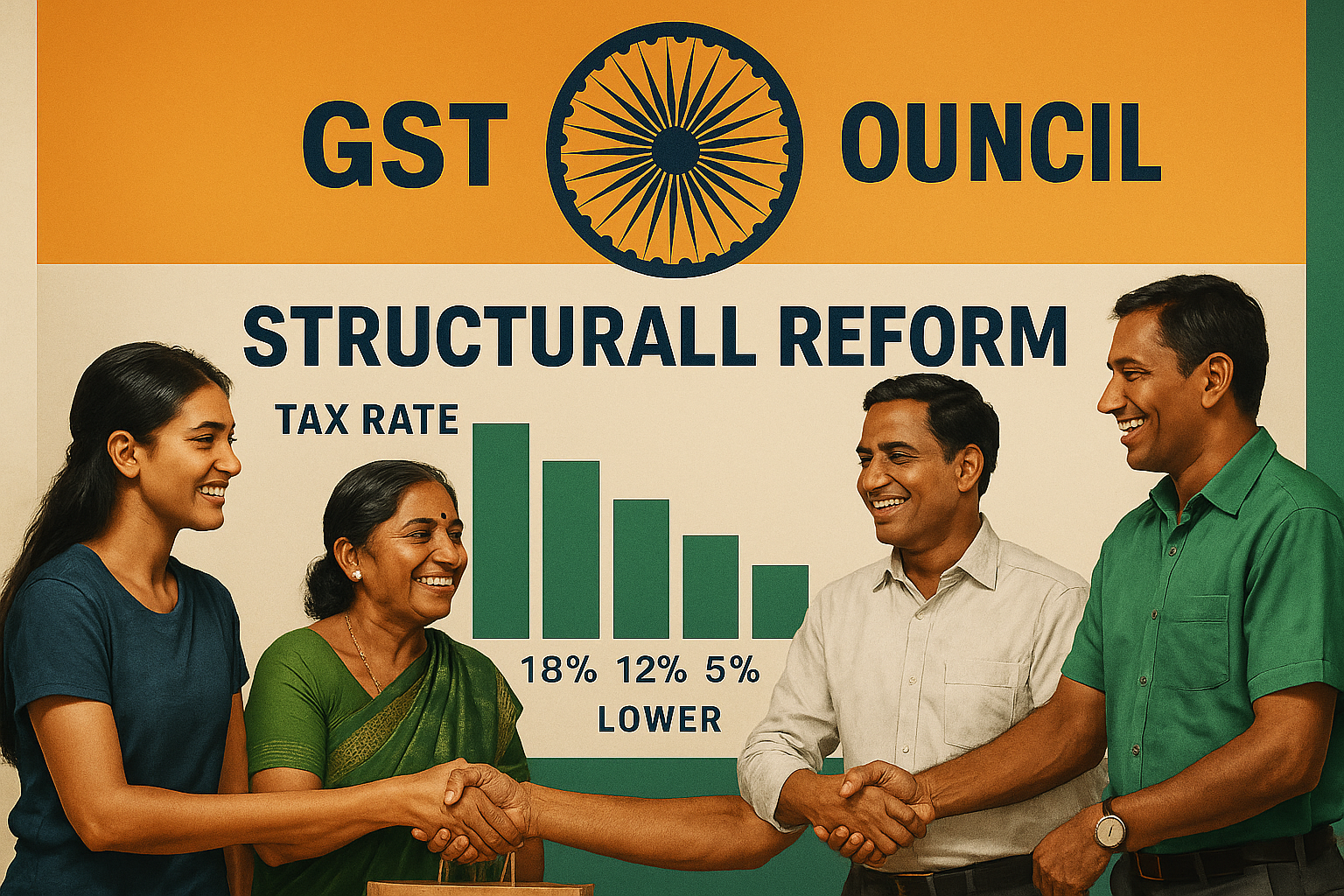The government has clarified that the latest GST rate cuts under GST 2.0 should be viewed as a structural reform aimed at strengthening India’s tax system, not as a short-term stimulus measure. By rationalizing rates and simplifying slabs, the reform intends to boost affordability, reduce litigation, and enhance compliance, while positioning India for sustainable, long-term growth.
The distinction underscores the government’s strategy to align tax policy with economic resilience and competitiveness, rather than temporary demand-boosting tactics.
Core Development
Officials highlighted that the GST 2.0 overhaul is part of a broader reform agenda:
Rationalization of Rates: Simplified structure with fewer slabs to reduce classification disputes.
Affordability Gains: Lower taxes on essentials like food, textiles, and insurance premiums.
Compliance Simplification: Businesses benefit from streamlined processes under the upgraded GSTN system.
By presenting GST cuts as structural adjustments, policymakers aim to build credibility around India’s fiscal reforms while insulating them from perceptions of short-term political or trade pressures.
Key Drivers Behind the Reform
Tax Transparency: Clearer rate structures reduce uncertainty for businesses and investors.
Consumer Relief: Lower GST on essentials puts more disposable income in households’ hands.
Economic Competitiveness: Reforms enhance India’s appeal for global investors and trade partners.
Stakeholder Impact
Consumers: Lower costs on daily essentials and services.
Businesses: Reduced compliance disputes and operating costs.
Government: Gains long-term credibility as a reform-focused administration.
Industry & Policy Reactions
Industry leaders welcomed the reform, noting it will strengthen consumption and improve ease of doing business. Economists emphasized that by framing the cuts as structural rather than temporary, the government is signaling that India’s fiscal approach is strategic and long-term, not reactionary.
Challenges Ahead
Revenue Risks: Short-term dip in collections could strain state finances.
Implementation: Smooth transition depends on GSTN system readiness.
Global Pressures: Tariff shocks and trade disruptions may still test fiscal stability.
Strategic Outlook
The positioning of GST rate cuts as structural reform indicates India’s shift toward long-term fiscal credibility and systemic efficiency. If implemented effectively, GST 2.0 could become a cornerstone of India’s economic transformation and support its ambition of becoming a $5 trillion economy.
Why This Matters
Reframing GST cuts as reform rather than stimulus provides clarity to investors, businesses, and consumers. It highlights that India’s tax policy is driven by strategy, not short-term fixes, bolstering trust in its economic roadmap.












